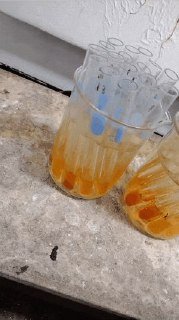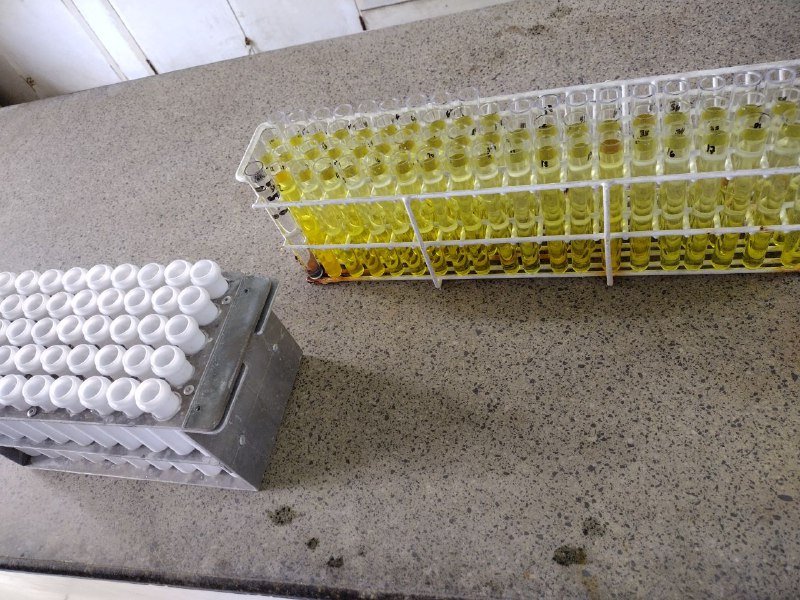It just occurred to me that I’ve been talking about analytical/processing methods already, yet I never once talked about extraction methods before you head to the actual analysis. So I’m just going to make a really quick leaway to introduce acid digestion and the kinds that are so often used in my line of chemistry.
So Acid digestion
This is one way to convert your sample (either solid, or already liquid) into a form that you can use for analysis. This is basically one form of sample preparation that’s done in a more precise and sophisticated manner.
When we say acid digestion. Think of when you eat food then it comes out as poop because your stomach has gastric juices in it (specifically, 0.5% KCl and around the same concentration for other salts in your stomach) only melt down what the body needs. Whatever isn’t needed or is in exces gets discarded in the form of waste. Then whatever gets melted by the gastric juices is what your body absorbs. It works the same way with acid digestion because you have something that can melt down what you need into liquid form (which is the preferred form for when you run it through an instrument), and in most cases, that’s metals, proteins, sugars, etc. Any compound you can think of, I’m pretty sure it will have an equivalent digestion, extraction, leaching or mobilising method for said compound. If not, then a method is probably in development and in validation somewhere And this is one of the beautiful things in chemistry, always changing, always evolving, always adjusting to find solutions.
So before I go on about my undying love for chemistry…
Back to acid digestion XD
In my field, we actually have only the most basic and fundamental digestions for mobilising metals. But back in the old lab I worked for, we had far more complicated methods than what I’ll be discussing here.
Aqua regia digestion
This one is the digestion process I’m kind of torn with… I mean… It’s easy, but it requires a lot of stirring compared to the 4 acid digestion. When we say aqua regia, it refers to royal water. Why? because the end product contains noble metals (gold, platinum, palladium and mercury (though only partially. it would still depend on whether it’s a mercury ore/cinnabar, or mercury as a contaminant). It can’t mobilise silver though), which are often really sought after in the mining field. In most cases, when we get a sample that has aqua regia digestion, we also have to perform gold extraction through smelting. The smelting is done as sort of a back up check in case that the gold concentrations are so high that the instrument has a hard time quantifying the concentration.
An aqua regia solution is one made out of 3 parts concentrated hydrochloric acid and one part nitric acid. The preparation always has to be before use or depending on the lab but I prefer this being prepared in parts like what we do in the lab to ensure that the metals you’re looking for do get leached out completely.
Looking into the individual components of this solution, you have nitric acid (HNO3), which is a powerful oxidising agent capable of converting small amount of gold to Au^(3+)
Then you have your hydrochloric acid (HCl) which is your chloride source. The presence of this allows the metal ions to form salts which stabilises it enough for analysis.
This is a small scale digestion for mercury samples.
Then this is one of the more large scale digestion types we get because usually, gold concentration is low for this sample
Also one trivia I find cool about aqua regia: Formerly, the only use for this solution was to make chloroauric acid then the solution will undergo an electrochemical process to refine the gold in that solution either through gold plating or through gold seeding. Best part is that the gold you can get from this method is at 99.99% purity. Much more pure than the native gold you’ll find in mines that have a much larger silver interference in them.
Then you have a 4-acid digestion
This is done by mixing hydrochloric acid, nitric acid, perchloric acid and hydrofluoric acid. All of these are crazy powerful acids that you may develop a trauma to, especially with hydrofluoric acid ;;-;; that kind of acid doesn’t leave marks like the latter, but it can kill you through internal lacerations by binding to all the calcium in your body ;;-;; and I don’t want to die like that, it’s why I wear a hazard suit whenever I change the bottle of hydrofluoric acid.
Anyways, when in digestion, hydrofluoric acid can dissolve silicate minerals, and when you’re going gold hunting, silicates are the number one thing you need to look out for, because where there’s high silica, there’s always a chance that the ore may contain traces of gold too yet that’s never really enough to mobilise the gold here, that’s why you have strong oxidizers like your nitric acid and perchloric acid to mobilise all the metals then hydrochloric acid again, to stabilise what you mobilised. Chlorides will always be the easier form for analysis and I am definitely thankful for HCl for making my life easier sometimes (despite all the acid burns I got from this).
This is also a small scale 4-acid digestion done as a preliminary check for most of our samples. They check for base metals whenever we do 4-acid here
When choosing between which methods, it’s important to know which metals you really prioritise because the use of 4-acid digestion is for near total digestion, and oftentimes, it’s used as a preliminary check for what kind of metals could be extracted from an unknown ore.
Sources
https://www.rsc.org/publishing/journals/prospect/ontology.asp?id=CMO%3A0001491&MSID=B
https://www.usgs.gov/media/files/aqua-regia-digestion-method
https://edu.rsc.org/magnificent-molecules/aqua-regia/3007792.article
https://link.springer.com/article/10.1007/s00769-006-0238-1
https://www.sgs.ca/en/mining/analytical-services/geochemistry/digestion-and-fusion/multi-acid-4acid-digestions
—-------
And so this ends one part of my chemistry rambles for today, and this is all I can apparently type while I’m on break. Lol why am I so chatty.


